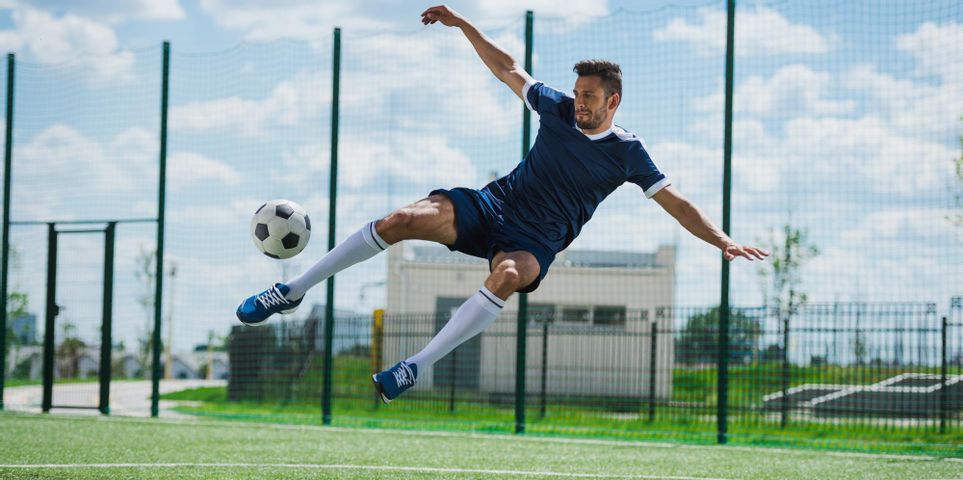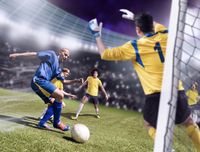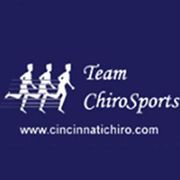3 Sports Injuries Common to Soccer Athletes

Soccer is one of the most popular sports around the world, and it continues to attract more players each year. As a result, chiropractors and physical therapists regularly treat these players for sports injuries. While these athletes are less likely to develop catastrophic injuries, they are susceptible to strains and sprains in the lower extremities—particularly those listed below.
What Are the Most Prevailing Soccer Injuries?
1. Sprained Ankles
An inversion injury, commonly referred to as a rolled or sprained ankle, accounts for approximately 16 percent to 29 percent of all soccer-related injuries. They occur when the ligaments that connect the talus bone in the ankle with the two leg bones experience excessive movement. This is usually due to the foot rolling inward, such as when stepping on uneven ground or landing on another player’s foot. Typically, the player can make a full recovery by icing the area and letting it rest for a few days or weeks. They might also need to complete physical therapy and wear a brace for future games.
2. ACL Tears
 Soccer players must regularly make high-velocity directional changes and rotate or pivot their lower extremities. This, along with making regular contact with other players, puts a lot of stress on the knees and increases their risk of developing anterior cruciate ligament (ACL) injuries. This sports injury causes a tear in the ligament located in the center of the knee and will result in rapid swelling to the area and difficulty standing on the affected leg. Surgery followed by physical therapy is typically the recommended solution to repair the tear. However, players can also practice preventative fitness—such as strengthening their core, hips, and thighs—to try and avoid this injury.
Soccer players must regularly make high-velocity directional changes and rotate or pivot their lower extremities. This, along with making regular contact with other players, puts a lot of stress on the knees and increases their risk of developing anterior cruciate ligament (ACL) injuries. This sports injury causes a tear in the ligament located in the center of the knee and will result in rapid swelling to the area and difficulty standing on the affected leg. Surgery followed by physical therapy is typically the recommended solution to repair the tear. However, players can also practice preventative fitness—such as strengthening their core, hips, and thighs—to try and avoid this injury.
3. Adductor Strains
Making quick changes of direction can also create an injury to the adductor or groin muscles located on the inside of the thigh. An adductor strain occurs when a forceful contraction of the muscles meets resistance—usually while the muscle is lengthening. This can happen when the player is kicking or stretching to reach the ball. RICE (rest, ice, compression, and elevation) is often an effective treatment for this type of strain and can have the player back on the field in a week or two. Physical therapy is often recommended to minimize any scar tissue.
If you are an athlete, your first concern after experiencing a sports injury should be getting better. At The Chiropractic & Sports Injury Center of Cincinnati, their sports chiropractor team has provided treatment to numerous athletes of all expertise and ages in the Cincinnati, OH, region. They will develop the best treatment plan to alleviate your pain and help you to strengthen and rehabilitate the area to prevent future injuries. Schedule an appointment with these sport physicians today by calling (513) 677-2200, and visit their website to learn more about their services.
About the Business
Have a question? Ask the experts!
Send your question

